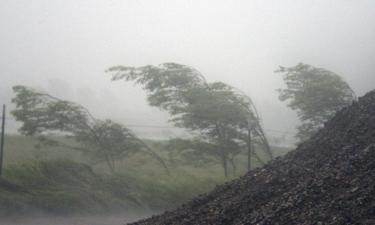The What, When and Where of Windstorms
Hurricanes and tornadoes aren’t the only sources of powerful winds. Thunderstorms, low pressure weather systems, and air moving over the major mountain ranges of the western U.S. can all give rise to high winds.
The winds these weather events cause—often called straight-line winds or windstorms—can sweep across as many as 100,000 square miles at a time at more than 60 miles per hour, leaving significant destruction in their wake. Windstorms down trees and power lines, wreck vehicles and homes, and cause scores of injuries and fatalities each year.
Although windstorms can happen anywhere, researchers have found some patterns in where, when and how they occur. They are more frequent in winter than in the summer months, particularly in the eastern U.S. Summer windstorms are most often associated with thunderstorms, and bands of thunderstorms moving together can create widespread windstorms called derechos that are most common in the Midwest. Mountain-driven windstorms—caused by winds accelerating as they fall along the downwind side of a mountain range—are most common along the east sides of the Rocky Mountains, the Cascades, and the Sierras, in late fall and winter.
Wherever and however they happen, windstorms can pack a wallop—and potentially serious consequences for your woods.
How can I get more tips?
It’s simple! Enter your email below.

